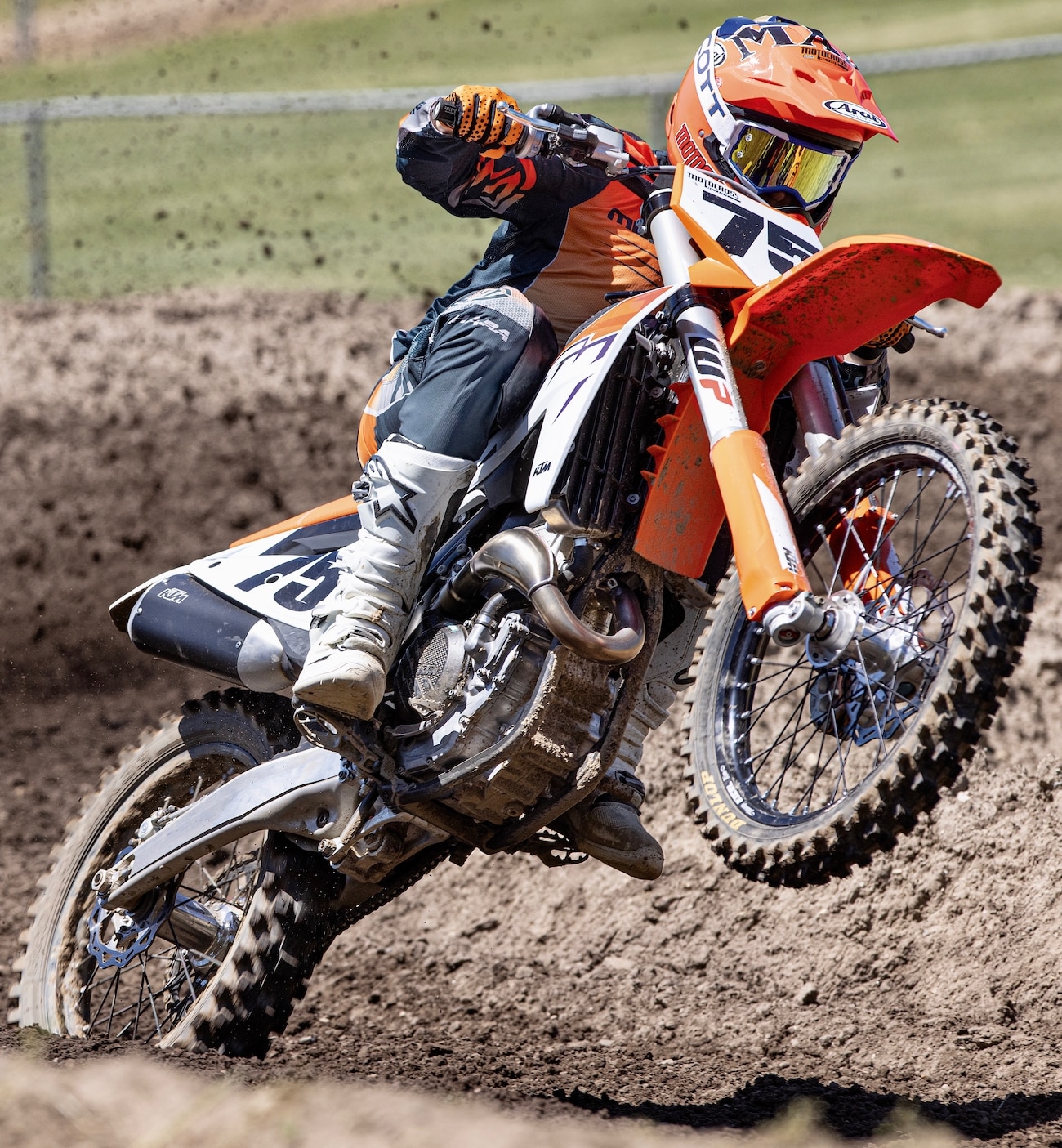TEN THINGS THAT WILL MAKE YOU FASTER: DYNAMIC VERSUS STATIC FLEXIBILITY
(1) Are you flexible. A simple and easy way to test your flexibility it to do the toe touch test without cheating. While standing erect, keeping your feet together and your knees straight, bend over and attempt to touch your toes. If you can touch your toes without bouncing, you are flexible. If your not even close, then its time to put on some yoga pants and get to work.
(2) Riding. Motocross takes a toll on the body. It’s one of the most physical demanding sports on Earth. Your body is consistently pulling, pushing, standing, sitting and contorting to control the 240-pound machine. The constant abuse from the hard landings, rough tracks, and holding on to the bike makes your muscles tendons, and joints tighten up. This is why you feel sore after a race and why you can’t move around on the bike as much as necessary which in turn will cause bad technique, crashing, fatigue ,or even injury.
(3) Flexibility. Flexibility is defined as the static maximum range of motion available to a joint. As we age our initial range of motion of the joints starts to decrease due to tight muscles and tendons. Lack of flexibility has become a health issue among many adults causing common issues such as bad posture, back pain, along with stiff joints and muscles. Having sufficient flexibility is a key ingredient to good health.
(4) Stretching. Flexibility is improved by stretching on a regular basis. It takes a consistent stretching routine to get the muscles to relax back to their normal state. Stretching a specific muscle group or tendon will result in increased muscle control, more flexibility and increased range of motion. Athletes in all sports use stretching for injury prevention, improved balance, increased performance and blood circulation.
(5) Riding Technique. Stretching and the gained flexibility will allow your body to move fluidity with the bike rather then fighting against it. Your hamstrings and hips are prime areas to focus on because these are the core elements of an aggressive stance on the bike. You don¹t need to be a gymnast, but you do understand that the ability of stretch you bike across the length of your bike (from fender to fender) is often the saving crash of a potential crash.
(6) Injury prevention. Whether you like it or not crashing is a part of a motocrosser’s life. Like most, you probably have an obligation to a 9-to-5 job and a family to feed. Injury prevention should be on the top of your to-do list. Pro rider have to stay healthy to keep earning money, but Vets also have to stay healthy for the same reasons. The more flexible you are, the more range of motion you have in your joints, which in turn reduces your risk of soreness, broken bones, torn tendons or muscles when you crash.
(7) Dynamic. Dynamic stretching uses specific movements to stretch muscles while actively moving a joint through the range of motion. This type of stretching will feel like a workout your heart rate should be elevated enough to break a sweat and should take between 10-20 minutes. Such exercises considered as dynamic movements are arm circles and walking lunges. Dynamic stretching should be used before you workout or ride to warm-up the body. Dynamic stretching increases your blood and oxygen flow.
(8) Static. Static stretching is the generic way to gain flexibility by holding specific positions while the body is at rest. This form of stretching should be used after you ride or workout when your body is still warm. Do not static stretch before an activity when your body is cold. This can lead to pulled muscles or decreased performance. We recommend building a full body stretching routine with a focus on the lower extremities. Hold each stretch for 30 seconds.
(9) Massage. Regular massage will help you to retain flexibility while working out the knots that training and riding load on your muscles. Massage helps your muscles elongated as it provides injury and stress relief.
(10) Foam Rolling. Foam Rolling is the poor man’s way to get a massage. It is an effective way to release and lengthen tight muscles. What is foam rolling? It is a piece of stiff tube-shaped foam about 22 inches long and 6 inches wide that you roll your muscles out on. The goal it to find a tender spot or knot in the muscle, then hold pressure directly onto the tender spot for 30-60 seconds until the pain subsides and the muscle releases and lengthens.







Comments are closed.